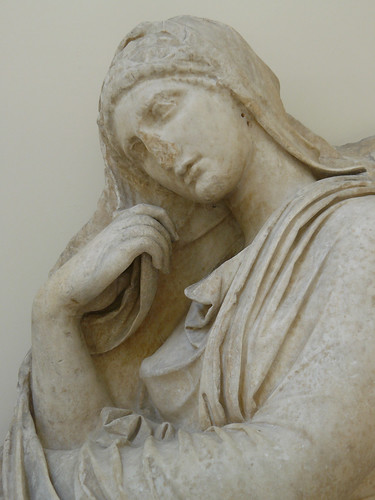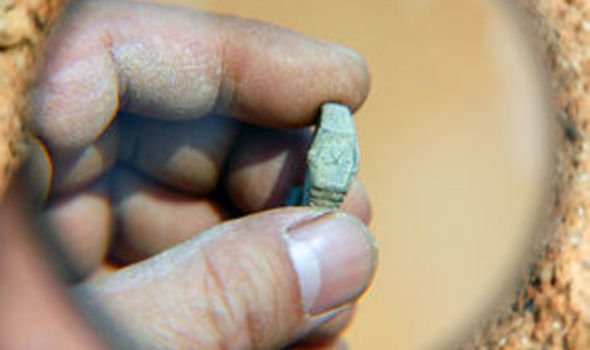
I watched a very interesting two-hour program about the Sahara and the history in that region on History Channel International yesterday. I was particularly interested in the segment about a Berber warrior queen that arose during the late 7th century to lead her people against invading Arabs in 669 CE. It's been many years ago that I read a book entitled "Warrior Queens" by celebrated historian Lady Antonia Fraser. I learned about several female warrior leaders in that book that I had never encountered before but even Lady Fraser seems to have overlooked Al Kahena.
[Image - Berber Woman, Emile Vernet-Lecomte, French, 1870]
I was able to find this interesting article about Dahia Al Kahena on the web though. An abstract:
"According to Arab chroniclers of the time, Kahena was half queen and half sorceress with dark skin, a mass of hair and huge eyes. When she was angry or possessed by her demons, her eyes would turn red and her hair would stand up on end. The chroniclers may have had an interest in painting a fiendish image of this woman. Yet such propaganda may have done more to contribute to her reputation as a fearsome opponent. Kahena amply demonstrated her fiery mettle when, in 696, she led a Berber force which routed an Arab army in the plains below the Atlas mountains spanning modern-day Algeria and Tunisia. So numerous were the Arab casualties that Arab chroniclers renamed the wadi where the battle took place as the `Valley of Disaster'. Like a latter-day Boadicea, or a precursor to Joan of Arc, this female warrior this female warrior was proving a troublesome enemy to the invaders.Legend may have grown around Kahena, but she was an all-too-real opponent for the caliphs forces. She proved utterly ruthless in conducting a guerrilla war of harassment. She adopted a scorched earth policy by having all the standing crops destroyed in order to deprive the Arab army of any sustenance from the land. This act, however, aroused resentment among settled tribes, who sent emissaries to the Arab commander asking him to come to their assistance.
In 699 the caliph, tired of the interminable struggle, decided to strike a decisive blow. He sent into North Africa the largest army ever seen in the region. The force was made up of Arab troops reinforced by thousands of Berbers who had turned against Kahena."
Like Boudicca, Al Kahena's revolt ended in a slaughter although her final battlefield was the huge colosseum built by the Roman emperor Gordian at the trading crossroads of Al Jem. However, she did not take her sons with her into death but ordered them to go to the Arab commander and offer their service. They were accepted into the caliph's service and later became outstanding leaders in their own right.
According to Wikipedia, her sons' acceptance was accomplished by an Arab officer that Al Kahena had captured early in her career and adopted.


